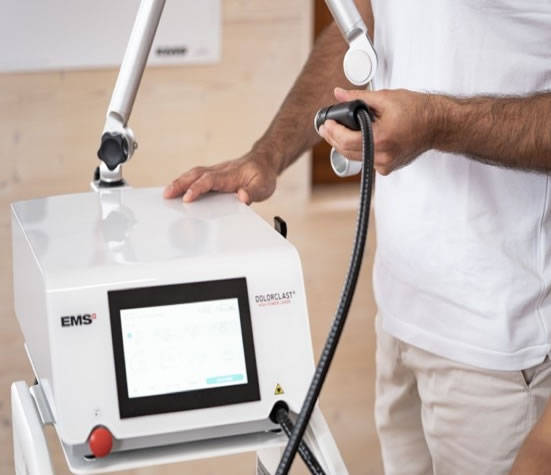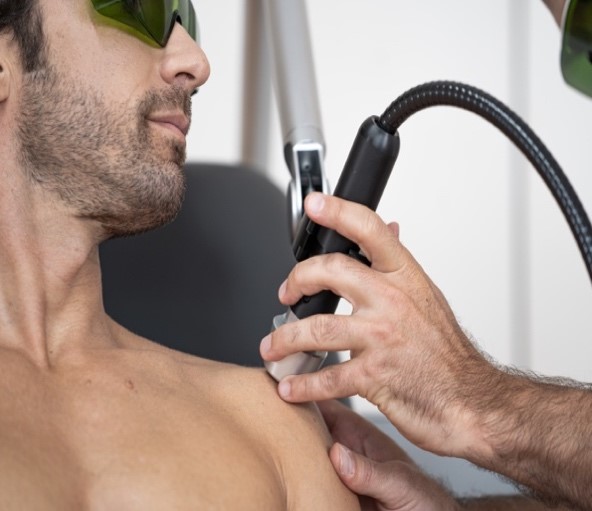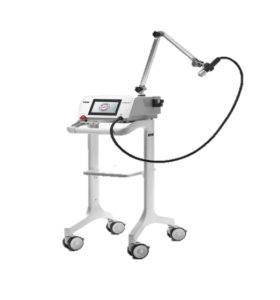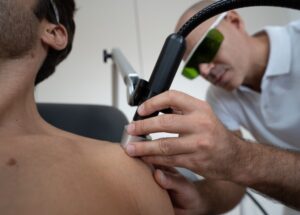Low Level Laser Therapy
What is Low Level Laser Therapy?
Low Level Laser Therapy (LLLT) or Photobiomodulation (PBM) is a low intensity light therapy. The effect is photochemical not thermal. The light triggers biochemical changes within cells and can be compared to the process of photosynthesis in plants, where the photons are absorbed by cellular photoreceptors and triggers chemical changes.
LLLT is Anti-Inflammatory & Promotes Tissue Healing
Through its positive effects on local immune mechanisms, LLLT has a powerful anti-inflammatory effect. This results in immune-mediated healing effects on the injured soft tissues (tendons, ligaments, muscle, joint capsule etc) and also of involved nerves, skin etc.
LLLT stimulates blood flow and lymphatic drainage, improved delivery of oxygen and nutrition to the area, removal of oxygen-free radicals and other waste products, and tissue healing.
Get in touch


 We use the Swiss DolorClast High Power Laser machine: The power of the High Power Laser lies in its specially selected laser wavelength (expressed in nanometres [nm]), which determines its depth of penetration. Wavelengths between 650 nm and 1350 nm are defined as the ‘therapeutic window’ for laser therapy. Within this window, the laser penetrates deeply into the tissues rather than being mostly absorbed by water, blood or melanin. As a result, the laser can trigger biological mechanisms crucial for the healing process
We use the Swiss DolorClast High Power Laser machine: The power of the High Power Laser lies in its specially selected laser wavelength (expressed in nanometres [nm]), which determines its depth of penetration. Wavelengths between 650 nm and 1350 nm are defined as the ‘therapeutic window’ for laser therapy. Within this window, the laser penetrates deeply into the tissues rather than being mostly absorbed by water, blood or melanin. As a result, the laser can trigger biological mechanisms crucial for the healing process
